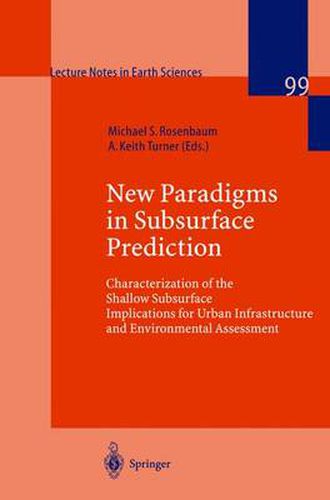Readings Newsletter
Become a Readings Member to make your shopping experience even easier.
Sign in or sign up for free!
You’re not far away from qualifying for FREE standard shipping within Australia
You’ve qualified for FREE standard shipping within Australia
The cart is loading…






This title is printed to order. This book may have been self-published. If so, we cannot guarantee the quality of the content. In the main most books will have gone through the editing process however some may not. We therefore suggest that you be aware of this before ordering this book. If in doubt check either the author or publisher’s details as we are unable to accept any returns unless they are faulty. Please contact us if you have any questions.
Characterisation of the shallow subsurface has gained in importance as civil and geotechnical engineering and environmental applications have become more dependent on a precise definition of geomechanical and geohydrological properties. A better understanding of the subsurface conditions offers wide-ranging benefits to governments, industry and individual citizens.Subsurface geological modelling became an economic and technologic reality in the late 1980’s, when competing 3-D geoscientific information systems were the subject of considerable research and evaluation, especially by the petroleum exploration industry. Investigations in the shallow subsurface impose additional requirements that have only recently become technically and economically achievable. The very shallow urban underground environment, where many infrastructure and utilities elements are located, presents the most difficult characterisation problems.Subsurface modelling techniques have matured, along with modern data base concepts. The evolution of the Internet and Web-browser technologies has expanded information transmission and dissemination capabilities. Subsurface models are being integrated with decision-support systems to provide predictions of technical and economic performance. Yet even the most sophisticated of these models leave some uncertainty in geologic interpretation. A variety of techniques for assessing uncertainty have been developed and are being evaluated.
$9.00 standard shipping within Australia
FREE standard shipping within Australia for orders over $100.00
Express & International shipping calculated at checkout
This title is printed to order. This book may have been self-published. If so, we cannot guarantee the quality of the content. In the main most books will have gone through the editing process however some may not. We therefore suggest that you be aware of this before ordering this book. If in doubt check either the author or publisher’s details as we are unable to accept any returns unless they are faulty. Please contact us if you have any questions.
Characterisation of the shallow subsurface has gained in importance as civil and geotechnical engineering and environmental applications have become more dependent on a precise definition of geomechanical and geohydrological properties. A better understanding of the subsurface conditions offers wide-ranging benefits to governments, industry and individual citizens.Subsurface geological modelling became an economic and technologic reality in the late 1980’s, when competing 3-D geoscientific information systems were the subject of considerable research and evaluation, especially by the petroleum exploration industry. Investigations in the shallow subsurface impose additional requirements that have only recently become technically and economically achievable. The very shallow urban underground environment, where many infrastructure and utilities elements are located, presents the most difficult characterisation problems.Subsurface modelling techniques have matured, along with modern data base concepts. The evolution of the Internet and Web-browser technologies has expanded information transmission and dissemination capabilities. Subsurface models are being integrated with decision-support systems to provide predictions of technical and economic performance. Yet even the most sophisticated of these models leave some uncertainty in geologic interpretation. A variety of techniques for assessing uncertainty have been developed and are being evaluated.